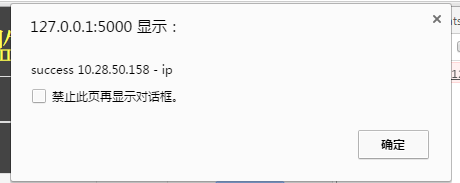python async with和async for的使用
网上async with和async for的中文资料比较少,我把PEP 492中的官方陈述翻译一下。
异步上下文管理器”async with”
异步上下文管理器指的是在enter和exit方法处能够暂停执行的上下文管理器。
为了实现这样的功能,需要加入两个新的方法:__aenter__ 和__aexit__。这两个方法都要返回一个 awaitable类型的值。
异步上下文管理器的一种使用方法是:
class AsyncContextManager:
async def __aenter__(self):
await log('entering context')
async def __aexit__(self, exc_type, exc, tb):
await log('exiting context')
新语法
异步上下文管理器使用一种新的语法:
async with EXPR as VAR: BLOCK
这段代码在语义上等同于:
mgr = (EXPR)
aexit = type(mgr).__aexit__
aenter = type(mgr).__aenter__(mgr)
exc = True
VAR = await aenter
try:
BLOCK
except:
if not await aexit(mgr, *sys.exc_info()):
raise
else:
await aexit(mgr, None, None, None)
和常规的with表达式一样,可以在一个async with表达式中指定多个上下文管理器。
如果向async with表达式传入的上下文管理器中没有__aenter__ 和__aexit__方法,这将引起一个错误 。如果在async def函数外面使用async with,将引起一个SyntaxError(语法错误)。
例子
使用async with能够很容易地实现一个数据库事务管理器。
async def commit(session, data):
...
async with session.transaction():
...
await session.update(data)
...
需要使用锁的代码也很简单:
async with lock: ...
而不是:
with (yield from lock): ...
异步迭代器 “async for”
一个异步可迭代对象(asynchronous iterable)能够在迭代过程中调用异步代码,而异步迭代器就是能够在next方法中调用异步代码。为了支持异步迭代:
1、一个对象必须实现__aiter__方法,该方法返回一个异步迭代器(asynchronous iterator)对象。
2、一个异步迭代器对象必须实现__anext__方法,该方法返回一个awaitable类型的值。
3、为了停止迭代,__anext__必须抛出一个StopAsyncIteration异常。
异步迭代的一个例子如下:
class AsyncIterable:
def __aiter__(self):
return self
async def __anext__(self):
data = await self.fetch_data()
if data:
return data
else:
raise StopAsyncIteration
async def fetch_data(self):
...
新语法
通过异步迭代器实现的一个新的迭代语法如下:
async for TARGET in ITER: BLOCK else: BLOCK2
这在语义上等同于:
iter = (ITER)
iter = type(iter).__aiter__(iter)
running = True
while running:
try:
TARGET = await type(iter).__anext__(iter)
except StopAsyncIteration:
running = False
else:
BLOCK
else:
BLOCK2
把一个没有__aiter__方法的迭代对象传递给 async for将引起TypeError。如果在async def函数外面使用async with,将引起一个SyntaxError(语法错误)。
和常规的for表达式一样, async for也有一个可选的else 分句。.
例子1
使用异步迭代器能够在迭代过程中异步地缓存数据:
async for data in cursor: ...
这里的cursor是一个异步迭代器,能够从一个数据库中每经过N次迭代预取N行数据。
下面的语法展示了这种新的异步迭代协议的用法:
class Cursor:
def __init__(self):
self.buffer = collections.deque()
async def _prefetch(self):
...
def __aiter__(self):
return self
async def __anext__(self):
if not self.buffer:
self.buffer = await self._prefetch()
if not self.buffer:
raise StopAsyncIteration
return self.buffer.popleft()
接下来这个Cursor 类可以这样使用:
async for row in Cursor():
print(row)
which would be equivalent to the following code:
i = Cursor().__aiter__()
while True:
try:
row = await i.__anext__()
except StopAsyncIteration:
break
else:
print(row)
例子2
下面的代码可以将常规的迭代对象变成异步迭代对象。尽管这不是一个非常有用的东西,但这段代码说明了常规迭代器和异步迭代器之间的关系。
class AsyncIteratorWrapper:
def __init__(self, obj):
self._it = iter(obj)
def __aiter__(self):
return self
async def __anext__(self):
try:
value = next(self._it)
except StopIteration:
raise StopAsyncIteration
return value
async for letter in AsyncIteratorWrapper("abc"):
print(letter)
为什么要抛出StopAsyncIteration?
协程(Coroutines)内部仍然是基于生成器的。因此在PEP 479之前,下面两种写法没有本质的区别:
def g1(): yield from fut return 'spam'
和
def g2():
yield from fut
raise StopIteration('spam')
自从 PEP 479 得到接受并成为协程 的默认实现,下面这个例子将StopIteration包装成一个RuntimeError。
async def a1():
await fut
raise StopIteration('spam')
告知外围代码迭代已经结束的唯一方法就是抛出StopIteration。因此加入了一个新的异常类StopAsyncIteration。
由PEP 479的规定 , 所有协程中抛出的StopIteration异常都被包装在RuntimeError中。
以上就是本文的全部内容,希望对大家的学习有所帮助,也希望大家多多支持【听图阁-专注于Python设计】。


